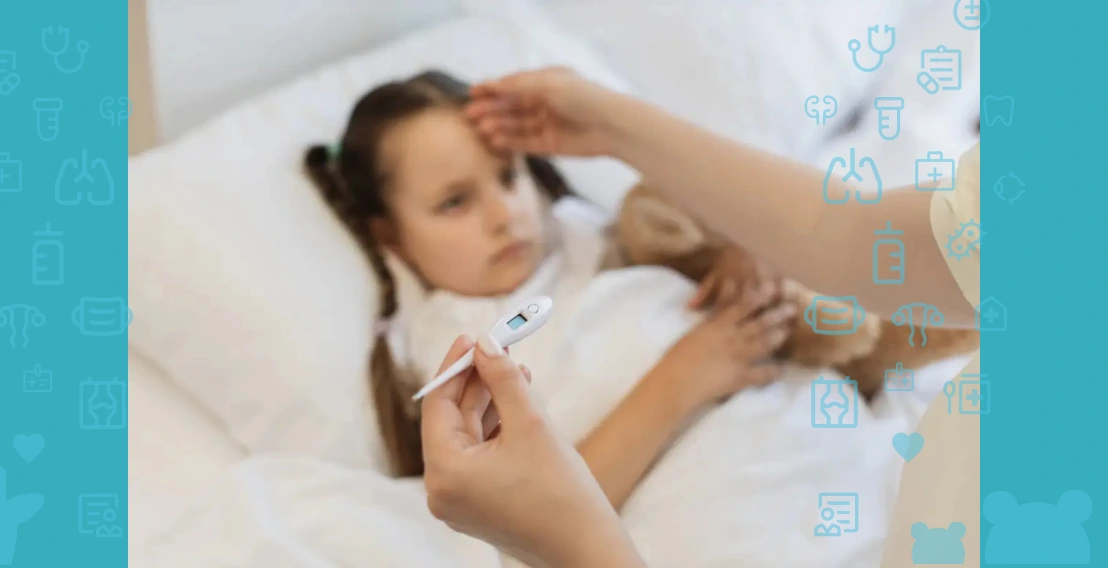A high fever in a child often causes horror in parents, but in reality it serves as a means of protecting the body and helps the doctor fight pathogenic bacteria and viruses.
What is a fever in children?
High temperature is a protective and compensatory reaction of the body. With the help of elevated temperature, the body creates unfavorable conditions for pathogenic microorganisms and stimulates the immune system to fight the infection. As a result, phagocytosis is accelerated, the synthesis of interferon and antibodies is activated. In addition, at high temperature, most microorganisms (especially viruses that are sensitive to it) stop multiplying and even die.
Therefore, it is important not to figure out how to bring down a high temperature in a child, but to identify and eliminate the cause of the disease. The temperature should be brought down only when it reaches 38.5⁰C, and in children younger than 3 months - 38⁰C. At 37.5⁰C, the temperature is brought down only in those children who have previously had febrile (associated with high fever) seizures.
There are 2 types of fever: "pink" and "white". In "pink" fever, the skin turns pink or red, becomes moist and warm. The characteristic signs of "white" fever are pale skin, bluish lips, cold extremities, which indicates an unfavorable course of the disease and a high risk of complications.
Causes of high fever in a child
By increasing the temperature, the body reacts to various stimuli: infections, inflammation, intoxication, autoimmune diseases, overheating of the body, vaccinations, teething and tooth extraction.
In most cases, fever in children occurs with acute respiratory infections, acute respiratory viral infections, otitis media, food poisoning. In infants, a rise in temperature is very often observed during teething and for this reason it is usually not very high.
Main symptoms of high fever
- chills and tremors;
- sweating;
- headache;
- pain in muscles and joints;
- pain and sore throat;
- runny nose, cough;
- loss of appetite;
- weakness, drowsiness.
When a child has a fever, it is important to stay calm. The main task of parents is to maintain fluid balance, if necessary, give the child an antipyretic, monitor their well-being and do not self-medicate. Do not be afraid to seek advice from a pediatrician if something is bothering you.
First aid for high fever in a child

First of all, it is necessary to create comfortable conditions in the room. The optimal temperature is 18-20⁰С, humidity is 55-70%. A humidifier will help maintain high air humidity. In its absence, wet cleaning is carried out: dust is wiped every 2 hours and the floor is washed twice a day. Be sure to ventilate the room.
Dress the child in comfortable, loose clothing made of natural fabrics. If there is no chill, do not wrap the baby up so that he or she sweats. Overheating will only worsen the general condition.
At high temperatures, the child should be given more fluids to prevent dehydration. 70-100 ml of fluid per 1 kg of the child's body weight is required per day. It is better to give clean, still water to children under 3 years old. Older children can be given alkaline water without gas, tea (black, green, herbal), compote, compote, fruit drink, in addition - milk with honey and fruit juice in small quantities. Drink should be in small portions so as not to cause vomiting.
You should urgently call a doctor or an ambulance if your child has a very high temperature – over 39⁰C (for babies under 3 months – over 38⁰C), as well as if the fever is accompanied by:
- impaired consciousness (hallucinations, fainting, inhibition, drowsiness);
- difficulty breathing, convulsions;
- bluish or pale skin;
- vomiting and diarrhea;
- acute pain in the abdomen;
- dryness of the tongue and mucous membranes;
- lack of urine;
- skin rashes.
How to lower a fever without medication
Normalizing the temperature will help wiping. A towel or sponge is dipped in water, the temperature of which is 2-3 degrees lower than the child's body temperature, and then wrung out. Wipe the baby's skin with a damp cloth. You can wrap the calves of the legs with a wrung out towel for 5-10 minutes. After a quarter of an hour, the procedure is repeated.
Medicinal way to reduce high fever
The safest antipyretics are those containing ibuprofen or paracetamol. They are available in the form of tablets, syrup, or suppositories.
Self-medication can negatively affect the child's health, and overdose can disrupt the functioning of the liver. Only a pediatrician can determine the exact cause of the fever and prescribe adequate safe treatment. Therefore, even with a subfebrile temperature, it is necessary to consult a doctor.
What you absolutely cannot do when children have a high temperature
If the child has a high fever, it is strictly contraindicated to:
- Give aspirin, analgin, and nimesulide - in children under 15 years of age, aspirin can trigger Reye's syndrome, which affects the liver and brain.
- Give homeopathic medicines – they can cause allergies, and their effectiveness has not been proven.
- Use paracetamol and ibuprofen simultaneously, as their mechanism of action is the same (the interval between doses should be at least 6 hours).
- Do vinegar and alcohol wipes - in young children, the skin quickly absorbs all substances applied to it, which can cause burns and intoxication.
- Cover with a wet sheet, immerse in cold water - hypothermia of the skin may have the opposite effect (reduced heat transfer as a result of vasospasm).
- Use a hot bath and shower – these procedures increase the temperature.
- Apply "folk methods": soar your feet, breathe over potatoes, put mustard plasters and jars.
- Undressing the child to cool him down, as well as wrapping him too tightly.
- Force the baby to lie down if he wants to move.
- Force-feeding a child.
